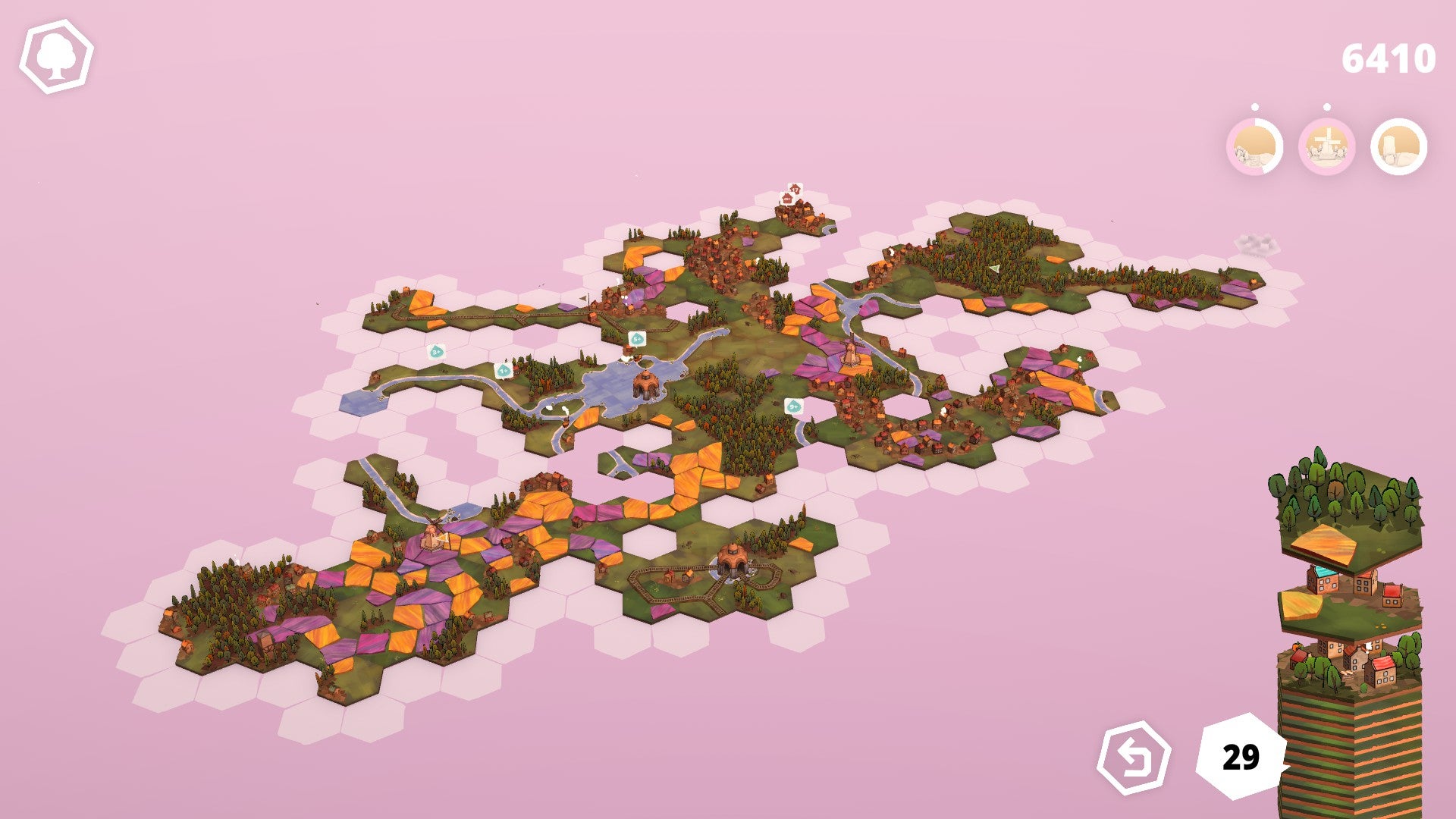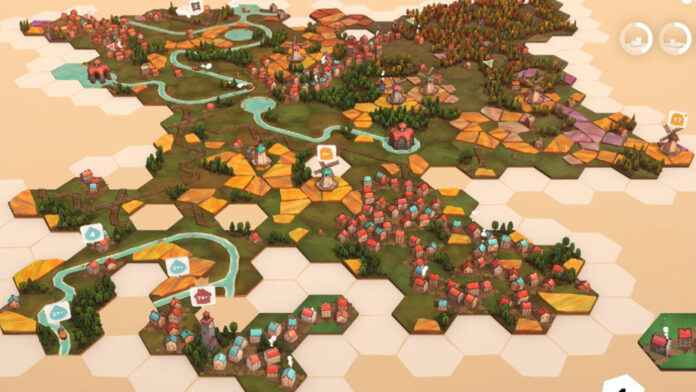Hello! With Dorfromantik landing on Switch today, here’s a piece from Jay that takes a closer look at landscapes. If you’re interested in the Switch port itself, we’re running a piece on Saturday.
I can’t ever get my Dorfromantik dioramas to look quite right. Other people seem to be able to make their rural idylls look balanced, organised. Villages and farms are rounded while rivers gently meander. For me, it’s the other way around. Rivers stagnate in huge lakes while houses and fields snake across the landscape in jagged lines.
It chafes particularly because we’re all familiar with the kind of bucolic landscape that Dorfromantik tasks you with making. By placing hexagonal puzzle pieces so that the edges line up – tree to tree, field to field, home to home – you build out these landscapes, and score points for keeping the jigsaw aligned. Every so often a tile will come with a quest, like turning it into a farm with 50 fields, and completing these gives you more tiles. You can play until you run out.
The whole game plays with a top-down view, presenting the land as both puzzle and art piece. Its beauty is an important part of its design, and one that’s clearly been carefully considered by the developers. Forests, villages, and little steam trains on rickety railways are in. Parks, cities, and roads are out. The only progression in the game is additional tile and overview aesthetics for completing certain challenges across multiple play sessions. Wheat fields might become lavender; deer appear in forests; towns become speckled with tiny pumpkins. But fundamentally, the basics of Dorfromantik’s presentation of landscape are unchangeable.
Even the word Dorfromantik itself refers to a particular kind of romanticisation. As developer Zwi Zauch told Robert it means “the kind of nostalgic feeling you get when you long to be in the countryside.” It’s not surprising, then, that there are no skyscrapers or cars. But what we’re nostalgic for doesn’t come from a vacuum.
Landscape theorist Barbara Bender calls attention to how we create static representations of the countryside as something beautiful to be observed – and what they miss out. No landscape has just one meaning; it’s experienced differently by everyone who sees it, participates in it, or just imagines it. The farm labourer, the landowner, the day walker, the wild camper, and the gamer do not see the same field in the same way. But these diverse experiences are often flattened in artistic representations.
On its surface, Dorfromantik, too, flattens. The biggest omission from its tileset isn’t multi-storey buildings or roads. It’s people. We see their imprints: the food that’s made for them, the houses they live in, and the trains they drive – although not any carriages to carry passengers. But we never see the individuals, and how they might each experience the picturesque world they live in a little differently.
But as a game, it turns the countryside into a space of play, inviting the player to be a cocreator in its representation. And it’s here where these contested meanings are hidden. When you have a mandate to both create a village of more than one hundred houses and a stream with ten tiles’ worth of water, and you get a tile with both a stream and a cluster of homes, where should it go?

The goals themselves also have the push and pull of the political. Connecting up as many trees as possible is undoubtedly a good thing for the (imagined) wildlife of the game. In the real world, there’s been a push to establish forest corridors so that animals can travel between otherwise isolated pockets of habitat, widening species’ social groups and reducing competition for resources. Making a sprawling town, perhaps not so much.
But that cocreation still takes place within the aesthetic constraints of the game itself. Nowhere is this more obvious than in the farm systems. I’m used to the patchwork quilt of the British landscape, seamed by crisscrossing hedgerows. Making monolithic field systems feels wrong. But look at a German landscape from above and it’s clear why the Dorfromantik developers don’t have the same nostalgic attachment to shrubbery.
In other words, Dorfromantik raises its own contested meanings. As an aesthetic object it bakes in assumptions about landscape and nostalgia. But as a puzzle it can raise questions about interpretation and land usage.

Maybe that’s why all my forests and fields snake. I don’t want to commit an area to one representation. Where there’s a neatly rounded village there’s no room for a corridor of trees. Where fields march off into the distance there’s the blank space on either side of them where I can imagine people congregating: workers on their lunch break mixing with families with children and dogs. Each experiencing the space differently, each understanding it in their own way.
This, too, is a nostalgic representation, of course. Maybe everything ends up in lines just because I’m missing hedges.
www.eurogamer.net







